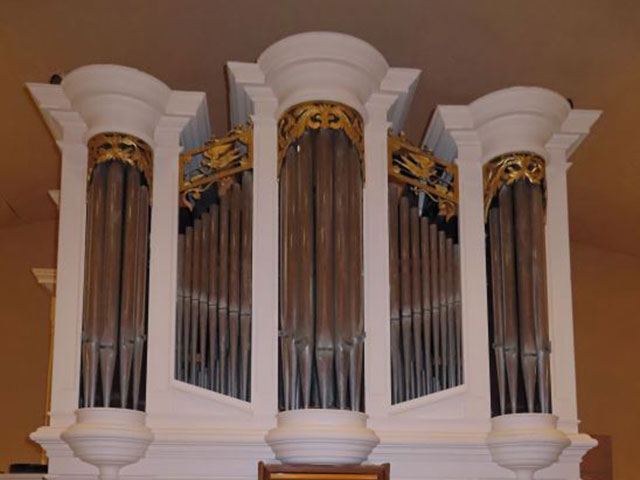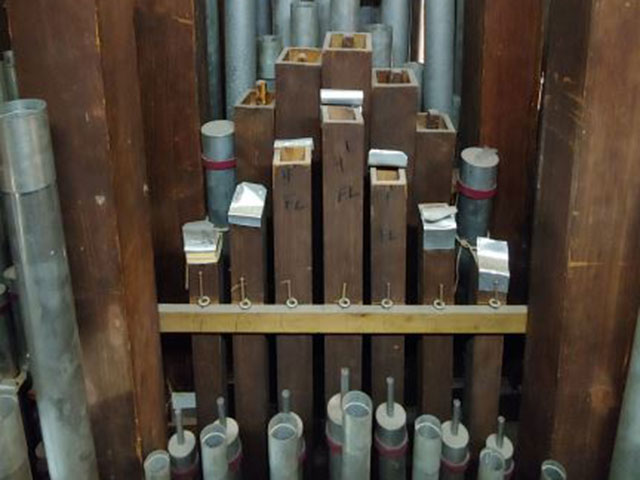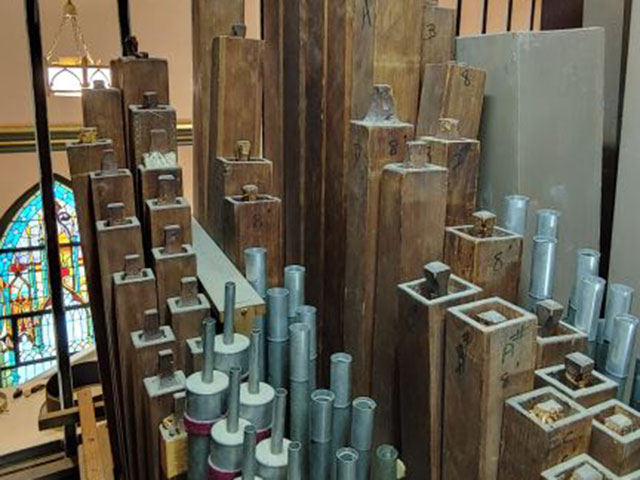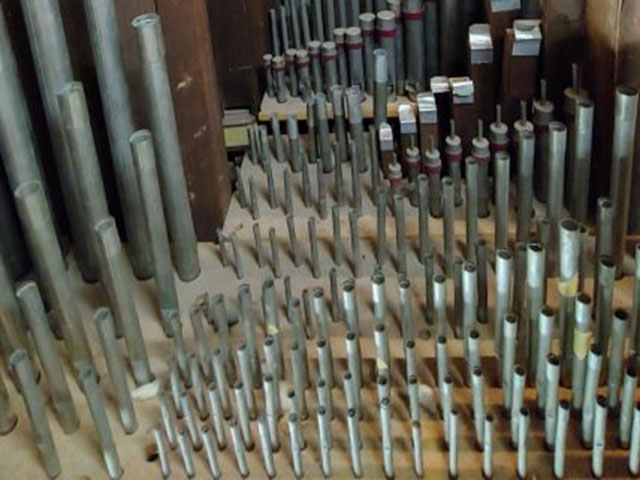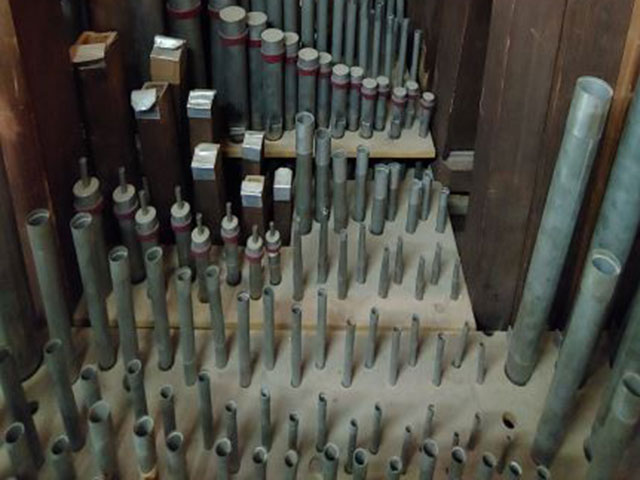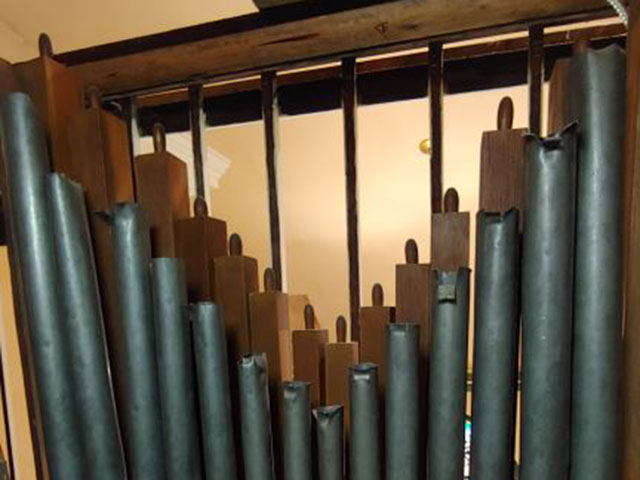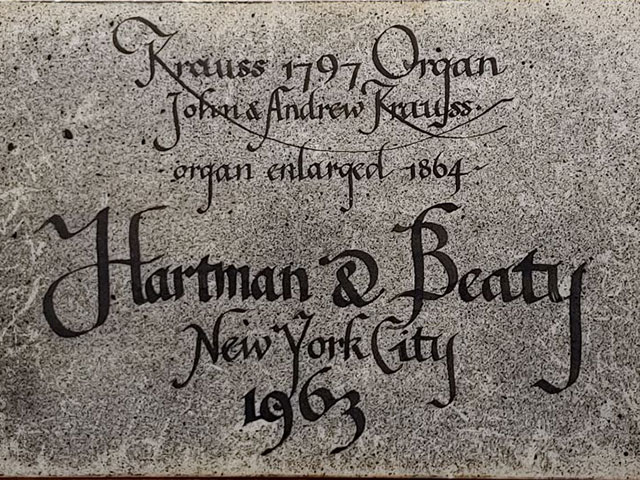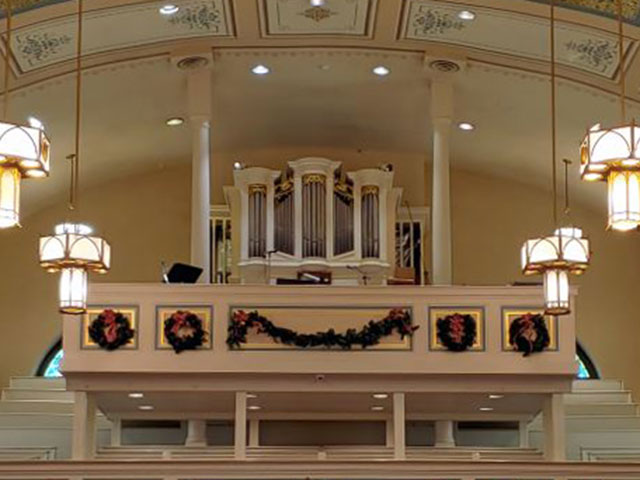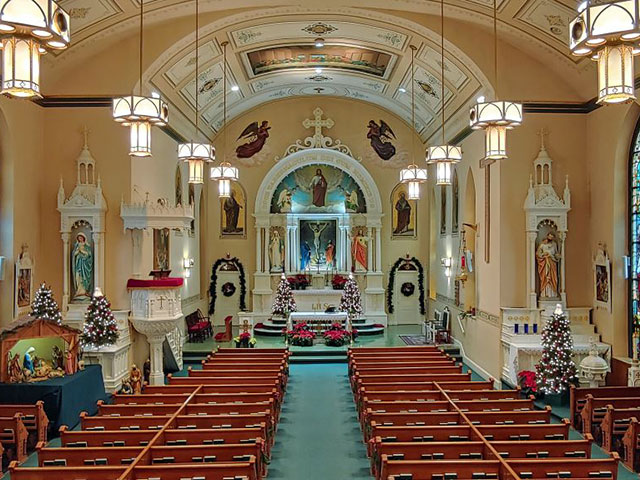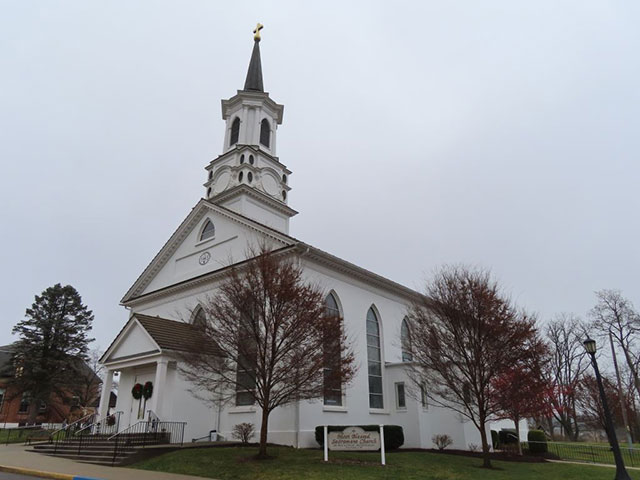| Manual I | |
|---|---|
| 8' | Prestant |
| 8' | Quintadena |
| 8' | Nighthorn |
| 4' | Principal |
| 4' | Flute |
| 2 2/3' | Nasat |
| 2' | Octave |
| 1 1/3' | Quinte |
| 1' | Mixture IV |
| Manual II | |
|---|---|
| 8' | Gedect |
| 4' | Rohrflute |
| 4' | Principal |
| 2 2/3' | Cornet II |
| Pedal | |
|---|---|
| 16' | Principal |
| 16' | Subbass |
| 8' | Principal |
Notes
Survey of the 1799/1864 John & Andrew / George Krauss organ in The Most Blessed Sacrament Church in Bally, PA by Phil Cooper
The following is transcribed from typed notes attached to the organ case.
The organ was comissioned on June 5, 1797 and the building was begun late in October by John Krauss, a Schwenkfelder, assisted by his younger brother Andrew. The organ was ready for inspection by the Church officials the following Fall and installed in St. Paul's Chapel early in 1799.
It had one manual, a 13 note pedal board, 10 stops and 500 pipes. All parts were made by hand. Newspapers were cut into patterns and pasted on wood. The wood was then cut according to the pattern. The printing of these newspapers is clearly legible "1796" and "1797" and carry the title "Philadelphia Correspondent."
Many interesting stories are recorded in the papers found in the organ still glued to the wood pipes. Those attached to the wooden bellows are found in the museum and carry the story of John Adams who was to succeed George Washington as the second president of the United States. When the second manual was added in 1865 the newspaper mentioned the assissination of President Lincoln.
The organ was moved to its present location in 1836. It was enlarged betweened 1864 and 1865, apparently by a son or grandson of Andrew Krauss. In this form it had two manuals, an 18 note pedal board, 16 stops and 705 pipes. It was pumped by hand until 1909.
By 1962, the organ was in need of major repairs. Previous atempts to raise the pitch to modern standards severely damaged the pipework. Consequently a complete program restoration/rebuilding was undertakend aimed at renewing the instrument's tonal and visual beauty. Today, it remains tracker action, unenclosed, 16 stops on two manuals, 32 note pedal board, but the number of pipes has increased to 868.
The organ case which directs the tone of the organ down into the Church is in the late Baroque style which prevailed in the mid 18th century. Folding doors which originally closed over the console had to be removed to accommodate the second manual which was installed in 1864. The black, white and gold decorative scheme is original, while the speaking pipes, of pure tine, fulfill the promise of John Krauss for the Church that they would "shine like silver." These pipes, as well as the foliage draperies, covered with 22 karat gold-leaf, require no maintenance and should never be painted. The trumpeting angels between the case towers are of special interest because they are fine and unusual examples of primitive are in American style.
The restoration/rebuilding of the historic organ, under the direction the pastor Rev. Charles L. Allwein, was completed in 1963 by the Hartman-Beaty organ builder of New York. In reading the dairy of John Krauss we find the they were engaged in building small pipe organs or "music boxes" as they were called, from 1790 until 1796 when the first commercial organ was built on November 2, 1796 as we read: "I went to Worchester for to set up the new organ for the Calvinist Wentz Church. In February 1797 another organ was commissioned for the Long Swamp Church but in June of the year 1797 our project was for the Catholic Church in Bally, Berks County. This was to be our largest organ to be built so far and was to serve the Church for hundreds of years."
The first factory of the Krauss brothers was at Kraussdale, Montgomery County, but was later moved to Palm, Montgomery County where it still stands by the wayside not much altered. John and Andrew dissolved their partnership in 1812 where upon John devoted himself to wool carding. His brother Andrew continued the building of organs.
The original organ, built with simple and crude tools and a tuning fork, took almost two years to build and the cost was 175 pounds which in American money would be $787.50 since the pound was worth $4.50. The restoration/rebuilding in 1963 took almost a year, since as much of the original organs parts were preserved, and cost close to the sum of Nine Thousand Dollars. The complete diary, pictures of the factory and homestead of The Krauss boys are all found in the museum adjacent to the Church.
This organ, described above, is in regular use in the Church of the Most Blessed Sacrament, and is the oldest Krauss organ not in a museum.
